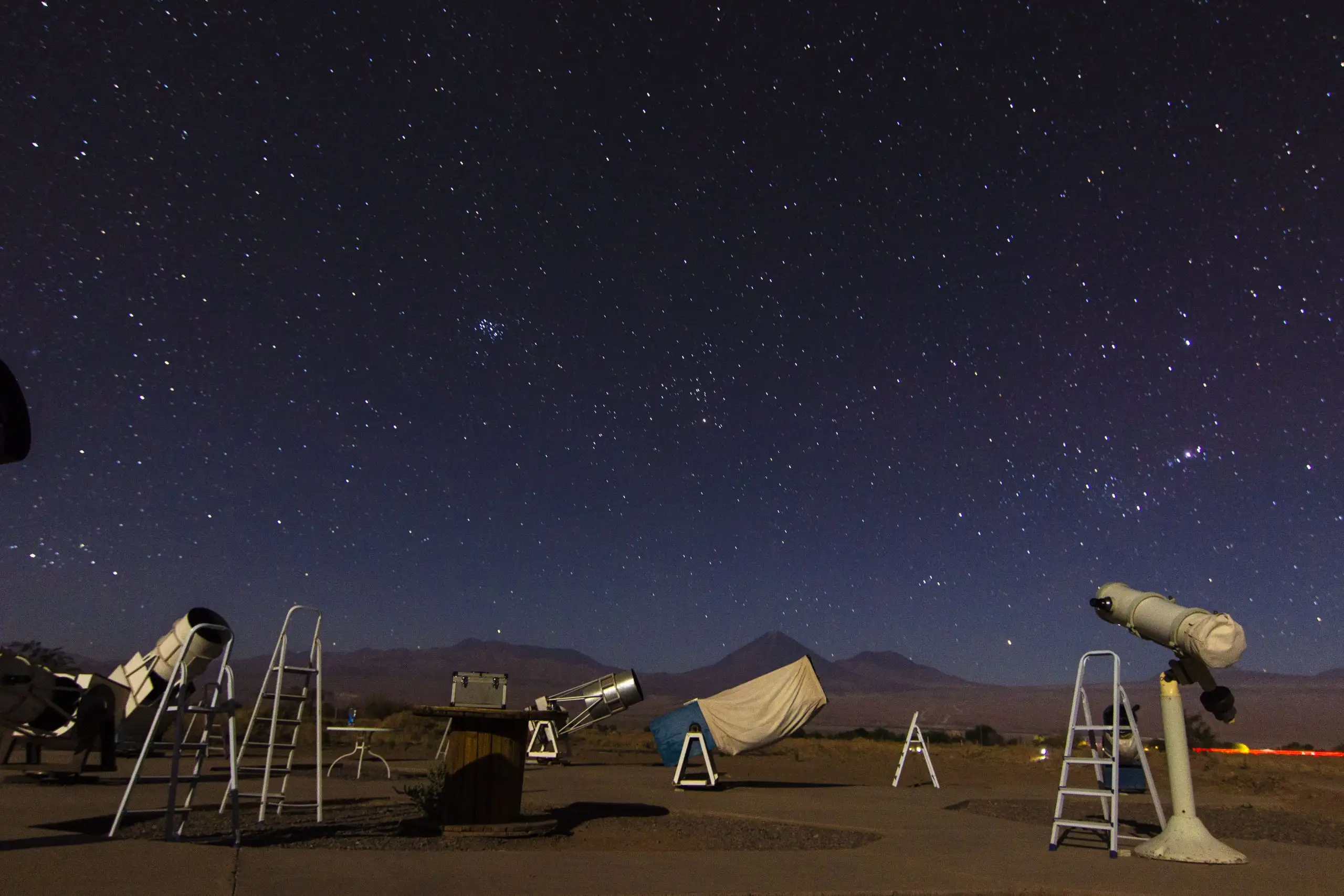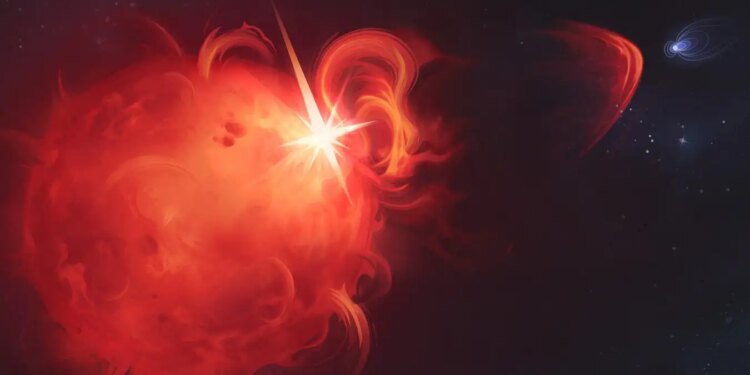
Artist’s impression of a coronal mass ejection on a star
Olena Shmahalo/Callingham et al.
A cloud of plasma ejected by a star 130 light years away has been detected by a radio telescope on Earth, giving astronomers their first definitive observation of a coronal mass ejection (CME) from a star beyond our sun.
CMEs occur when storms on the surface of a star fling out bubbles of magnetised plasma into space. Such eruptions from our sun produce the auroras we see on Earth, but they can also be powerful enough to rip the atmosphere away from Venus, which is closer to the sun and isn’t protected by a magnetic field.
Scientists have seen hints of CMEs on distant stars for decades, but have been unable to prove that material actually escaped the stars’ gravitational and magnetic pull, rather than just leaping up from the surface before being drawn back in.
Now, Joseph Callingham at the Netherlands Institute for Radio Astronomy and his colleagues have used the Low Frequency Array (LOFAR) radio telescope in the Netherlands to pick up a burst, or radio waves, emitted by a CME as it travelled through space. These signals would be possible to detect only if the ejection had completely left the star StKM 1-1262, from which it originated.
The team also used the space-based X-ray telescope XMM-Newton to determine the originating star’s temperature, rotation and brightness.
Callingham says prior observations suggested that CMEs happened on distant stars, but that this new data is the smoking gun that confirms it. “You could argue that we’ve had hints for 30 years, and that’s true, but we never explicitly proved it,” he says. “We’re saying that mass has been ejected, has been lost from the star, and that’s always been a debate in the literature.”
The radiation from the ejection would have been powerful enough to jeopardise any nearby life forms. Anthony Yeates at Durham University, UK, says greater knowledge of the frequency and magnitude of CMEs from distant stars should be incorporated into models about the potential habitability of exoplanets. “If there was an exoplanet, it would have been quite catastrophic for any life on it,” he says.

The world capital of astronomy: Chile
Experience the astronomical highlights of Chile. Visit some of the world’s most technologically advanced observatories and stargaze beneath some of the clearest skies on earth.
Article amended on 12 November 2025
We corrected the star’s distance from Earth.
Topics:
Source link : https://www.newscientist.com/article/2503764-huge-cloud-of-plasma-belched-out-by-star-130-light-years-away/?utm_campaign=RSS%7CNSNS&utm_source=NSNS&utm_medium=RSS&utm_content=home
Author :
Publish date : 2025-11-12 16:00:00
Copyright for syndicated content belongs to the linked Source.














